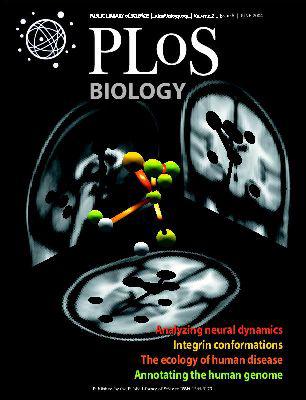PP1 磷酸酶控制着弓形虫子细胞的形成和支链淀粉的水平
IF 7.2
1区 生物学
Q1 BIOCHEMISTRY & MOLECULAR BIOLOGY
引用次数: 0
摘要
类囊体寄生虫的致病力基于其快速分裂以产生大量生物量的能力。因此,细胞周期的调控是寄生虫致病的关键。磷酸化是一种关键的翻译后修饰,调节着真核细胞周期的许多方面。众所周知,磷酸酶 PP1 在真核生物的磷酸化平衡中发挥着重要作用。我们探索了 TgPP1 在弓形虫细胞周期中的作用。通过使用条件突变株,我们发现 TgPP1 调节着细胞周期的许多方面,包括子细胞内膜复合体(IMC)的正确组装、细胞器的分离以及核分裂。意想不到的是,TgPP1 的耗竭也会导致直链淀粉的积累,直链淀粉是一种储存多糖,通常存在于寄生虫的潜伏缓虫形态中。利用转录组学和磷酸蛋白组学,我们发现 TgPP1 主要通过翻译后机制发挥作用,使包括 IMC 蛋白在内的靶蛋白去磷酸化。TgPP1 还能使一种带有淀粉结合结构域的蛋白质去磷酸化。突变分析表明,目标磷酸化位点与寄生虫调节直链淀粉稳态水平的能力有关。因此,我们发现 TgPP1 在速生虫细胞周期调节过程中具有多方面的作用,而且还能调节直链淀粉的积累。本文章由计算机程序翻译,如有差异,请以英文原文为准。
PP1 phosphatase controls both daughter cell formation and amylopectin levels in Toxoplasma gondii
Virulence of apicomplexan parasites is based on their ability to divide rapidly to produce significant biomass. The regulation of their cell cycle is therefore key to their pathogenesis. Phosphorylation is a crucial posttranslational modification that regulates many aspects of the eukaryotic cell cycle. The phosphatase PP1 is known to play a major role in the phosphorylation balance in eukaryotes. We explored the role of TgPP1 during the cell cycle of the tachyzoite form of the apicomplexan parasite Toxoplasma gondii . Using a conditional mutant strain, we show that TgPP1 regulates many aspects of the cell cycle including the proper assembly of the daughter cells’ inner membrane complex (IMC), the segregation of organelles, and nuclear division. Unexpectedly, depletion of TgPP1 also results in the accumulation of amylopectin, a storage polysaccharide that is usually found in the latent bradyzoite form of the parasite. Using transcriptomics and phospho-proteomics, we show that TgPP1 mainly acts through posttranslational mechanisms by dephosphorylating target proteins including IMC proteins. TgPP1 also dephosphorylates a protein bearing a starch-binding domain. Mutagenesis analysis reveals that the targeted phospho-sites are linked to the ability of the parasite to regulate amylopectin steady-state levels. Therefore, we show that TgPP1 has pleiotropic roles during the tachyzoite cell cycle regulation, but also regulates amylopectin accumulation.
求助全文
通过发布文献求助,成功后即可免费获取论文全文。
去求助
来源期刊

PLoS Biology
生物-生化与分子生物学
CiteScore
14.40
自引率
2.00%
发文量
359
审稿时长
3 months
期刊介绍:
PLOS Biology is an open-access, peer-reviewed general biology journal published by PLOS, a nonprofit organization of scientists and physicians dedicated to making the world's scientific and medical literature freely accessible. The journal publishes new articles online weekly, with issues compiled and published monthly.
ISSN Numbers:
eISSN: 1545-7885
ISSN: 1544-9173
 求助内容:
求助内容: 应助结果提醒方式:
应助结果提醒方式:


